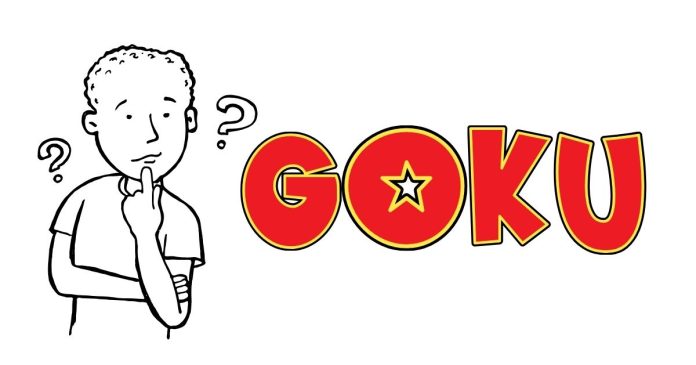Few characters in the world of anime and manga are as globally recognized and celebrated as Goku from Dragon Ball. Whether you know him as “Son Goku,” “Kakarot,” or simply “Goku,” his name resonates with fans across generations. But did you ever stop to wonder why he has different names and how these distinctions affect his identity?
In this blog post, we’ll explore the origins of Goku’s various names, their meanings, and what they signify for fans of the Dragon Ball franchise.
Who is Goku?
Goku, the protagonist of Dragon Ball, is a Saiyan warrior from the planet Vegeta who was sent to Earth as a baby. Raised by the kind-hearted Grandpa Gohan, Goku grows up with a pure heart, a love for martial arts, and a boundless appetite (both for food and for training).
Over the years, Goku has faced countless adversaries, from the Red Ribbon Army to intergalactic threats like Frieza and Majin Buu. His story of perseverance, growth, and friendship has made him one of anime’s most beloved characters.
The Name Game: Son Goku vs. Goku vs. Kakarot
1. Son Goku: The Original Name
In the original Japanese version of Dragon Ball, Goku’s full name is Son Goku (孫悟空). This name is deeply rooted in Japanese and Chinese folklore, specifically inspired by Sun Wukong, the Monkey King from the Chinese novel Journey to the West.
- Meaning of Son Goku:
- “Son” (孫): A common surname in Japan, it’s also the family name passed down from Gohan, Goku’s adoptive grandfather.
- “Goku” (悟空): Translates to “aware of emptiness” or “perception of nothingness,” a nod to Sun Wukong’s Buddhist enlightenment in Journey to the West.
Akira Toriyama, the creator of Dragon Ball, drew heavily from the Monkey King’s mythology when designing Goku. Like Sun Wukong, Goku has a tail (at least in his early years), extraordinary strength, and a mischievous yet good-hearted personality.
2. Goku: The International Name
When Dragon Ball was localized for Western audiences, “Son” was dropped, leaving the character known simply as Goku.
- Why the Change?
The simplification was likely to make the name easier for international audiences to remember and pronounce. Western cultures often place the family name after the given name, so “Son Goku” might have been confusing to non-Japanese viewers. - Cultural Impact:
Despite the change, the essence of the character remains the same. For many fans outside Japan, “Goku” has become synonymous with strength, resilience, and a never-give-up attitude.
3. Kakarot: The Saiyan Name
Another significant name for Goku is Kakarot, his birth name given to him by his biological Saiyan parents, Bardock and Gine.
- Why Kakarot?
Saiyan names are often vegetable-based puns. “Kakarot” is a play on “carrot,” continuing this tradition. Vegeta, for example, is derived from “vegetable,” and Raditz from “radish.” - When Is Kakarot Used?
“Kakarot” is primarily used by other Saiyans, such as Vegeta and Raditz. It highlights his Saiyan heritage, especially in moments where his dual identity as both an Earthling and Saiyan is explored.
What Does Each Name Represent?
Each of Goku’s names reflects a different aspect of his identity:
- Son Goku: Represents his Earthly upbringing and the influence of Grandpa Gohan. It’s tied to his humble, kind-hearted nature.
- Goku: The version of his name that’s most widely recognized, symbolizing his universal appeal and heroic journey.
- Kakarot: A reminder of his alien heritage and his role as a Saiyan warrior.
Why Do These Names Matter to Fans?
For long-time fans, the distinction between “Son Goku” and “Goku” can feel significant, as it ties back to the original Japanese culture and Toriyama’s vision. For newer or Western fans, however, “Goku” is often seen as the definitive name, free of the cultural context that might confuse casual viewers.
On the other hand, “Kakarot” has gained popularity thanks to its use in the series, especially in moments of rivalry between Goku and Vegeta. Vegeta’s insistence on calling him “Kakarot” is more than just a name—it’s a constant reminder of Goku’s Saiyan heritage and Vegeta’s pride as the Prince of Saiyans.
How Dragon Ball Games and Media Handle the Names
The various Dragon Ball games and spin-offs further highlight these distinctions. For example:
- Dragon Ball Z: Kakarot (2020): This action-RPG game emphasizes Goku’s Saiyan roots and his journey of self-discovery.
- In Japanese versions of games, “Son Goku” is often used, while English versions stick with “Goku.”
- “Kakarot” is used in scenes where Goku’s Saiyan identity is central, particularly in games that focus on his relationships with Vegeta and other Saiyans.
The Duality of Goku
Goku’s multiple names mirror the duality of his character: a Saiyan warrior destined for greatness and an Earthling who values family, friends, and simple pleasures like food and training.
His journey from “Son Goku,” the innocent boy with a tail, to “Kakarot,” the warrior who saves universes, is what makes his story timeless. Fans around the world resonate with his determination, humility, and the way he bridges different worlds.
Conclusion
Whether you call him Son Goku, Goku, or Kakarot, one thing remains clear: this iconic character transcends language and culture, uniting fans with his unwavering spirit and love for adventure.
Next time you hear someone refer to him by one of his many names, take a moment to appreciate the layers of meaning and the legacy of a character who’s more than just a name. He’s a symbol of hope, perseverance, and the power of always striving to be better.
So, what do you call him—Son Goku, Goku, or Kakarot? Let us know in the comments below!



